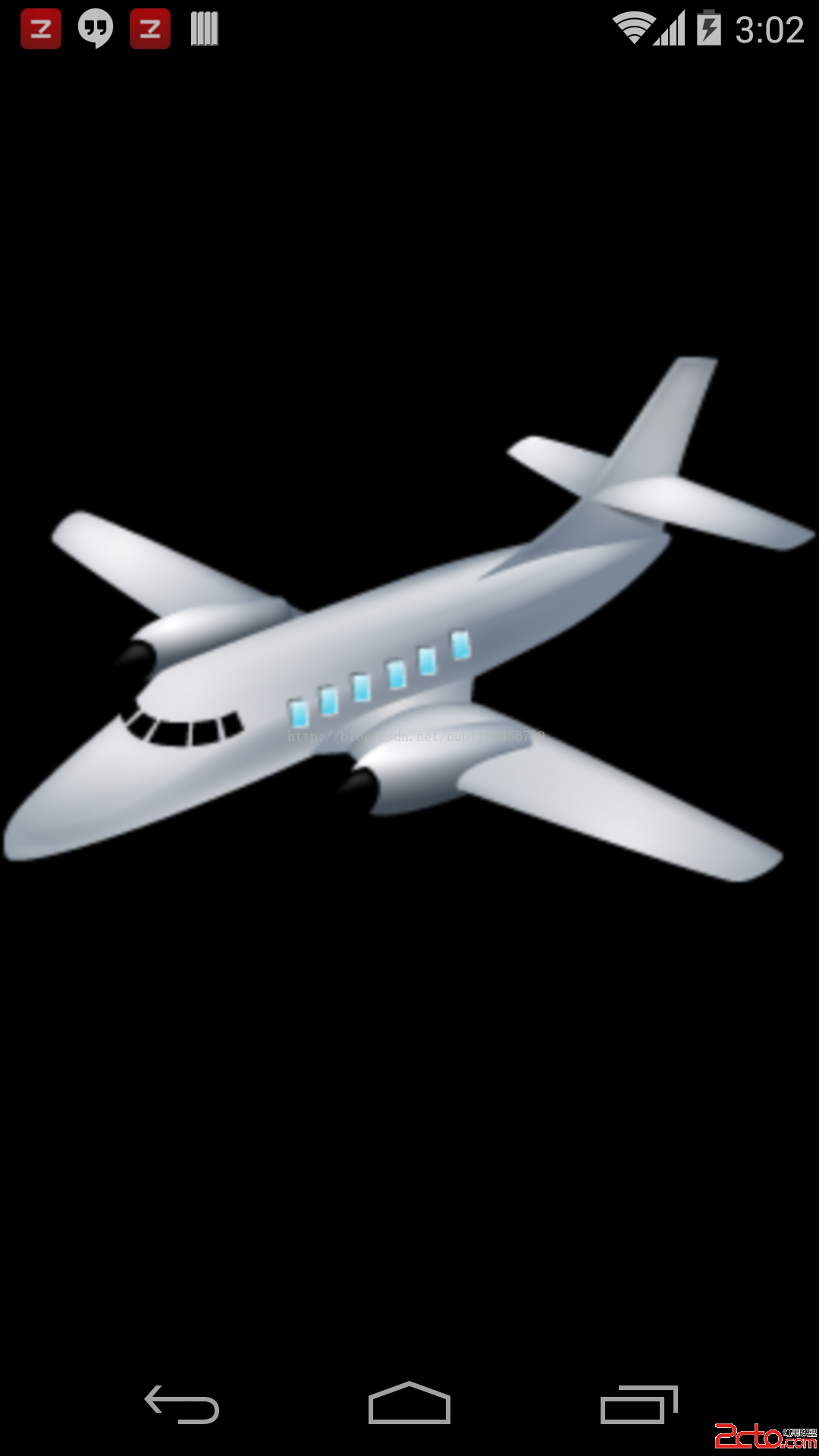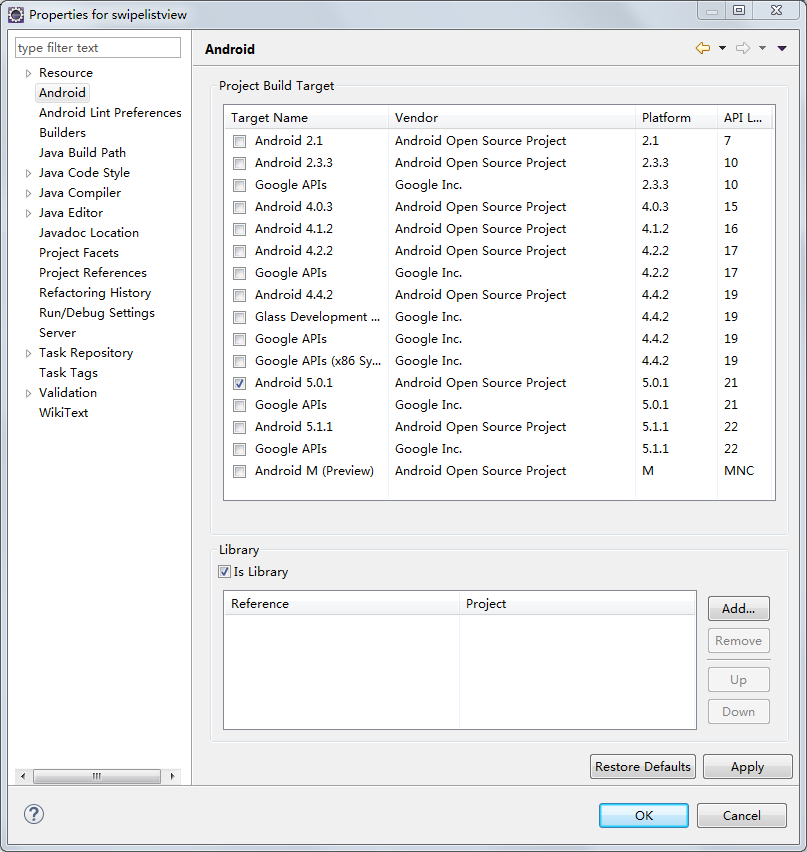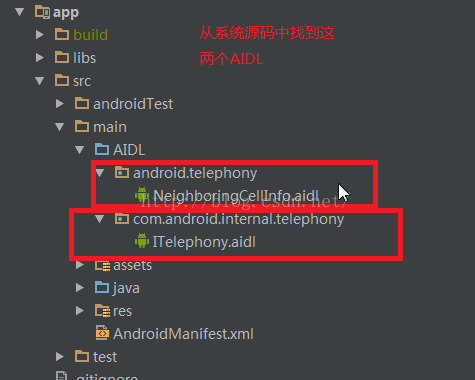編輯:關於Android編程
首先看一下GLSurfaceView是如何繪制的。正如android開發文檔中描述的那樣,我們需要new一個GLSurfaceView對象,然後設置一個實現了Renderer接口的對象,我們需要寫一個MyRender類,實現Renderer的方法等等。我們先看一下Activity的寫法。它不需要一個布局文件,我們將GLSurfaceView對象作為activity的contentview即可。如下:
package net.mobctrl.glsurfaceviewbmp;
import java.util.Random;
import android.annotation.SuppressLint;
import android.app.Activity;
import android.opengl.GLSurfaceView;
import android.os.Bundle;
import android.view.WindowManager;
/**
*
* @author Zheng Haibo
* @web http://www.mobctrl.net
*
*/
public class MainActivity extends Activity {
private GLSurfaceView glView; // Use GLSurfaceView
Random rnd = new Random();
@SuppressLint("NewApi")
@Override
protected void onCreate(Bundle savedInstanceState) {
super.onCreate(savedInstanceState);
setTheme(android.R.style.Theme_Translucent_NoTitleBar);
getWindow().addFlags(WindowManager.LayoutParams.FLAG_KEEP_SCREEN_ON);
glView = new GLSurfaceView(this); // Allocate a GLSurfaceView
glView.setRenderer(new MyGLRenderer(this)); // Use a custom renderer
glView.getAlpha();
this.setContentView(glView);
}
@Override
protected void onPause() {
super.onPause();
glView.onPause();
}
@Override
protected void onResume() {
super.onResume();
glView.onResume();
android.provider.Settings.System.putInt(this.getContentResolver(),
android.provider.Settings.System.SCREEN_BRIGHTNESS,
rnd.nextInt(256));
}
}
package net.mobctrl.glsurfaceviewbmp;
import java.util.Random;
import javax.microedition.khronos.opengles.GL10;
import android.content.Context;
import android.opengl.GLSurfaceView.Renderer;
import android.opengl.GLU;
/**
* @date 2014年10月20日 下午2:49:17
* @author Zheng Haibo
* @Description: TODO
*/
public class MyGLRenderer implements Renderer {
Context context; // Application's context
Random r = new Random();
//private Square square;
private GLBitmap glBitmap;
private int width = 0;
private int height = 0;
private long frameSeq = 0;
private int viewportOffset = 0;
private int maxOffset = 400;
public MyGLRenderer(Context context) {
this.context = context;
//square = new Square();
glBitmap = new GLBitmap();
}
@Override
public void onSurfaceChanged(GL10 gl, int width, int height) {
if (height == 0) { // Prevent A Divide By Zero By
height = 1; // Making Height Equal One
}
this.width = width;
this.height = height;
gl.glViewport(0, 0, width, height); // Reset The
// Current
// Viewport
gl.glMatrixMode(GL10.GL_PROJECTION); // Select The Projection Matrix
gl.glLoadIdentity(); // Reset The Projection Matrix
// Calculate The Aspect Ratio Of The Window
GLU.gluPerspective(gl, 45.0f, (float) width / (float) height, 0.1f,
100.0f);
gl.glMatrixMode(GL10.GL_MODELVIEW); // Select The Modelview Matrix
gl.glLoadIdentity();
}
/**
* 每隔16ms調用一次
*/
@Override
public void onDrawFrame(GL10 gl) {
gl.glClear(GL10.GL_COLOR_BUFFER_BIT | GL10.GL_DEPTH_BUFFER_BIT);
// Reset the Modelview Matrix
gl.glLoadIdentity();
gl.glTranslatef(0.0f, 0.0f, -5.0f); // move 5 units INTO the screen is
// the same as moving the camera 5
// units away
// square.draw(gl);
glBitmap.draw(gl);
changeGLViewport(gl);
}
/**
* 通過改變gl的視角獲取
*
* @param gl
*/
private void changeGLViewport(GL10 gl) {
System.out.println("time=" + System.currentTimeMillis());
frameSeq++;
viewportOffset++;
// The
// Current
if (frameSeq % 100 == 0) {// 每隔100幀,重置
gl.glViewport(0, 0, width, height);
viewportOffset = 0;
} else {
int k = 4;
gl.glViewport(-maxOffset + viewportOffset * k, -maxOffset
+ viewportOffset * k, this.width - viewportOffset * 2 * k
+ maxOffset * 2, this.height - viewportOffset * 2 * k
+ maxOffset * 2);
}
}
@Override
public void onSurfaceCreated(GL10 gl,
javax.microedition.khronos.egl.EGLConfig arg1) {
glBitmap.loadGLTexture(gl, this.context);
gl.glEnable(GL10.GL_TEXTURE_2D); // Enable Texture Mapping ( NEW )
gl.glShadeModel(GL10.GL_SMOOTH); // Enable Smooth Shading
gl.glClearColor(0.0f, 0.0f, 0.0f, 0.5f); // Black Background
gl.glClearDepthf(1.0f); // Depth Buffer Setup
gl.glEnable(GL10.GL_DEPTH_TEST); // Enables Depth Testing
gl.glDepthFunc(GL10.GL_LEQUAL); // The Type Of Depth Testing To Do
gl.glHint(GL10.GL_PERSPECTIVE_CORRECTION_HINT, GL10.GL_NICEST);
}
}
package net.mobctrl.glsurfaceviewbmp;
import java.nio.ByteBuffer;
import java.nio.ByteOrder;
import java.nio.FloatBuffer;
import javax.microedition.khronos.opengles.GL10;
import net.mobctrl.glsurfaceviewbmp.R;
import android.content.Context;
import android.graphics.Bitmap;
import android.graphics.BitmapFactory;
import android.opengl.GLUtils;
/**
* @date 2014年10月20日 下午3:09:33
* @author Zheng Haibo
* @Description: TODO
*/
public class GLBitmap {
private FloatBuffer textureBuffer; // buffer holding the texture coordinates
private float texture[] = {
// Mapping coordinates for the vertices
0.0f, 1.0f, // top left (V2)
0.0f, 0.0f, // bottom left (V1)
1.0f, 1.0f, // top right (V4)
1.0f, 0.0f // bottom right (V3)
};
private FloatBuffer vertexBuffer; // buffer holding the vertices
private float vertices[] = { -1.0f, -1.0f, 0.0f, // V1 - bottom left
-1.0f, 1.0f, 0.0f, // V2 - top left
1.0f, -1.0f, 0.0f, // V3 - bottom right
1.0f, 1.0f, 0.0f // V4 - top right
};
public GLBitmap() {
ByteBuffer byteBuffer = ByteBuffer.allocateDirect(vertices.length * 4);
byteBuffer.order(ByteOrder.nativeOrder());
vertexBuffer = byteBuffer.asFloatBuffer();
vertexBuffer.put(vertices);
vertexBuffer.position(0);
byteBuffer = ByteBuffer.allocateDirect(texture.length * 4);
byteBuffer.order(ByteOrder.nativeOrder());
textureBuffer = byteBuffer.asFloatBuffer();
textureBuffer.put(texture);
textureBuffer.position(0);
}
/** The texture pointer */
private int[] textures = new int[1];
public void loadGLTexture(GL10 gl, Context context) {
// loading texture
Bitmap bitmap = BitmapFactory.decodeResource(context.getResources(),
R.drawable.plane_image);
// generate one texture pointer
gl.glGenTextures(1, textures, 0);
// ...and bind it to our array
gl.glBindTexture(GL10.GL_TEXTURE_2D, textures[0]);
// create nearest filtered texture
gl.glTexParameterf(GL10.GL_TEXTURE_2D, GL10.GL_TEXTURE_MIN_FILTER,
GL10.GL_NEAREST);
gl.glTexParameterf(GL10.GL_TEXTURE_2D, GL10.GL_TEXTURE_MAG_FILTER,
GL10.GL_LINEAR);
// Use Android GLUtils to specify a two-dimensional texture image from
// our bitmap
GLUtils.texImage2D(GL10.GL_TEXTURE_2D, 0, bitmap, 0);
// Clean up
bitmap.recycle();
}
public void draw(GL10 gl) {
// bind the previously generated texture
gl.glBindTexture(GL10.GL_TEXTURE_2D, textures[0]);
// Point to our buffers
gl.glEnableClientState(GL10.GL_VERTEX_ARRAY);
gl.glEnableClientState(GL10.GL_TEXTURE_COORD_ARRAY);
// Set the face rotation
gl.glFrontFace(GL10.GL_CW);
// Point to our vertex buffer
gl.glVertexPointer(3, GL10.GL_FLOAT, 0, vertexBuffer);
gl.glTexCoordPointer(2, GL10.GL_FLOAT, 0, textureBuffer);
// Draw the vertices as triangle strip
gl.glDrawArrays(GL10.GL_TRIANGLE_STRIP, 0, vertices.length / 3);
// Disable the client state before leaving
gl.glDisableClientState(GL10.GL_VERTEX_ARRAY);
gl.glDisableClientState(GL10.GL_TEXTURE_COORD_ARRAY);
}
}
從GLBitmap可以看出,我們首先需要加載一個圖片資源,然後生成texture。在這裡,特別說明一下changeGLViewport這個方法,如果在MyRender裡面去掉這個方法,運行結果是,GLSurfaceView繪制出一張圖片。添加這個方法以後,則是周期性得繪制一個由遠到近的一個“動畫”。注意,這種動畫,並沒有改變圖像本身,而且調整不通的視角產生的,因此效率很高。它的原理,就像你拿一個相機,去拍攝牆壁上得一幅畫,相機離畫越來越近時,畫面在放大,而牆壁本身並沒有變化。

-------------------------------------------------------------------
更多交流,Android開發聯盟QQ群:272209595
 Android使用SwipeListView實現類似QQ的滑動刪除效果
Android使用SwipeListView實現類似QQ的滑動刪除效果
QQ的滑動刪除效果很不錯,要實現這種效果,可以使用SwipeListView。1. 下載com.fortysevendeg.swipelistview這個項目(以前Git
 Android開源框架Image-Loader詳解
Android開源框架Image-Loader詳解
如果說評價一下哪個圖片開源庫最被廣泛使用的話,我想應該可以說是Universal-Image-Loader,在主流的應用中如果你隨便去反編譯幾個,基本都能看到他的身影,它
 Android掛斷電話以及Java Class Loader
Android掛斷電話以及Java Class Loader
Android中,要自己實現一個掛斷電話方法時,很久之前可以endCall().不過現在已經不行了,要應用反射機制,獲取到"android.os.Service
 Android中WebView無法後退和js注入漏洞的解決方案
Android中WebView無法後退和js注入漏洞的解決方案
因重定向無法正常goBack()解決方案首先說下問題,初始頁面為A,點擊某個鏈接跳轉到B(http://xxx.com.cn/),B頁面重定向到C頁面(http://xx